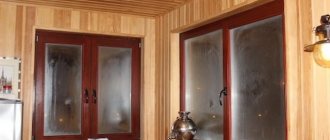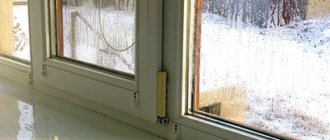Modern technologies have come a long way. They make our life more convenient and comfortable. For example, plastic windows. They avoid unnecessary noise, look aesthetically pleasing, are reliable and are quite easy to maintain. Unfortunately, it is not always possible to install them yourself.
Citizens often invite outsiders to help them install windows. It's inexpensive and practical. But what to do if the team completed the work, received the money, but during the inspection, mistakes were discovered?
How to write a claim for poor-quality installation of plastic windows (sample)? Where to turn if significant deficiencies are identified? How to return a product of inadequate quality to the manufacturer? Let's turn to the regulatory documents.
What is enshrined in law
Art. 18 of the Law on the Protection of Consumer Rights states that if deficiencies are discovered in the work performed, you have the right to demand that the contractor eliminate the identified deficiencies as soon as possible and at his own expense.
Also:
- you have the right to demand a reduction in the initial cost in proportion to the identified deficiencies;
- You can eliminate the shortcomings yourself or with the involvement of third parties. Then demand reimbursement from the main contractor for the expenses spent on repairs;
- if the identified deficiencies cannot be corrected, then you can safely terminate the contract and demand that the contractor return the advance.
If the performer says that he has eliminated the shortcomings, then demand from him documentary evidence of his words. This is your right, and he is obliged to provide all the required papers.
If defects are detected in installed metal-plastic structures, in addition to the above requirements, you can set a deadline for eliminating the identified deficiencies. Naturally, the time frame should be reasonable, about 7-10 days depending on the degree of defects. And everything is according to Art. 29 and 30 of the same consumer protection law.
If the contractor was unable to eliminate the shortcomings within the time limit set by you, he will have to pay a penalty. Its size is 3% for each day of delay.
To remember. If you discover any shortcomings in the work, you must send a written complaint to the contractor, in which you must indicate all your requirements for elimination and the deadlines for this.
If the contractor ignored your demands, then feel free to sue. And don't be afraid to defend your rights.
Attention! Our qualified lawyers will assist you free of charge and around the clock on any issues. Find out more here.
The most common complaints about windows.
The most common complaints are:
- sagging of the valves;
- blowing;
- condensation, not only on the glass unit, but also on the opaque parts of the plastic window;
- freezing in the corners of the window sill, under the window sill.
All manifestations of excessive humidity lead to the formation of fungus and mold, and in some cases these formations are hidden on the back side of the slopes (sandwich panels).
Hidden cases of mold formation on the back side of the slopes can be checked in a simple way: leave 2 pieces of bread in different places, one on the windowsill of the window being tested, and the second put away in another place. Bread placed on the windowsill, due to fungal fumes, if found, should become moldy faster than its opponent.
We are talking, to a greater extent, not about the very fact of the formation of certain external manifestations, but about the consequences on the well-being, on the health of a person who lives in such conditions.
The market for window products in Russia is characterized by massive incompetence of customers of plastic windows, who, in turn, are guided, often only by the cost of plastic windows and choose the cheapest option.
The main mistake is the fact of the first and fundamental question that the client asks when calling the window service.
And this is quite natural, because if the customer is incompetent in this matter of a technically complex product, the only available criterion for choosing windows will be the cost of the service.
Moreover, a large number of window companies quite often use this and neglect various tricks.
Procedure in case of detection of work deficiencies
The very first thing you need to do is find the team that carried out the installation and talk to them. It is necessary to explain to them the reason for its appearance, tell them about the identified defects and state to them your requirements.
If they do not listen to your words, and all attempts to establish a constructive dialogue with them fail, then you can begin to take more decisive action.
A plastic window installed with defects is grounds for filing a complaint. But before you begin negotiations with the contractor, you need to draw up a plan for your requirements. At the same time, formulate them as clearly and clearly as possible.
After all, you don’t come to negotiations with the management of the contractor’s company with a simple angry letter that does not mention either broken fittings or deformation of slopes and frames. And there are only rare mentions of the fact that now it is blowing from the window, and they are constantly sweating. Such a complaint will not even be considered.
Are you sure that you were supplied with defective products, or that the installation was carried out in violation of the requirements? In this case, you will need to find the main flaw in the design or installation and focus your efforts on it.
According to experts, the best thing for you to do is to first become familiar with your rights and only then begin to protect them by writing a complaint. After all, the law “on the protection of consumer rights” contains all the information you need.
Deadline for responding to a written complaint under the consumer protection law.
Read how to calculate the state fee in court here.
Who should change windows in a municipal apartment, read the link:
Important! Legislation ensures that the services provided to you are safe and of high quality. You can receive from the contractor all the information about the installation, construction materials and components, and the operating features of the windows subsequently.
But the most basic point in this law is compensation for damage. After all, incorrect installation will subsequently lead to costly repairs and replacement of damaged parts.
The main reasons for complaints due to thin (poor quality) reinforcement
Common reasons for manufacturer complaints regarding reinforcement thickness are:
- Insufficient professionalism and responsibility of employees on whom the choice of reinforcement depends. Window companies often pay attention to the requirements of regulatory documents, which are more “profitable”. The motivation of supply department employees is tied to savings on the purchase of materials, and not to their quality. The quality control service formally approaches the issue of the quality of purchased materials.
- Confidence that the manufacturer’s actions (possible implicit violations) cannot be verified or challenged by the customer. The reinforcement is located inside the window profile and is difficult to check. If the window is cut, you can refer to the GOST requirement for a thickness of 1.2 mm. And not every customer dares to conduct such a check.
- Accumulated experience and knowledge of professional customers (developers). Serious developers, especially in Moscow and St. Petersburg, are increasingly checking windows by cutting.
Photo: after checking the window reinforcement, the manufacturer may have significant problems. From experience they know that window manufacturers, especially regional ones, often use thin reinforcement. Some developers deliberately give orders to such companies. Firstly, regional companies offer lower prices. Secondly, after an unexpected verification method for the manufacturer, the developer files a complaint, reducing the price and receiving additional profit. At the same time, windows are almost never replaced, and apartment buyers are forced to live with low-quality windows. If complaints arise, they are addressed to the manufacturer under a warranty on windows for 3 years. - Defending their rights by end consumers. Recently, especially in cities with a population of over a million, buyers of new apartments have increasingly begun to assert their rights in matters of low-quality housing and, in particular, windows. Residents are suing entire residential complexes against the developer.
Hidden defects of plastic windows
In some cases, defects may be discovered only some time after the start of operation. Such defects are classified as hidden. Question: what should the owner do?
Art. 18 of the above-mentioned consumer protection law says that the consumer can make claims against the contractor (seller, manufacturer) regarding defects discovered in the product during the entire warranty period or shelf life.
In their work, any manufacturer of a product and its seller must follow the standards. You will also have to familiarize yourself with them.
Please note! They are as follows:
- GOST 23166-99. These are the general technical characteristics of window units;
- GOST 30674-99. PVC window blocks;
- GOST 30673-2013. PVC profiles for door and window blocks;
- GOST R 52749-2007. Window installation seams with self-expanding vapor-permeable tapes;
- GOST 30971-2012. Assembly seams of junctions of window blocks to openings in the wall;
- GOST R 54170-2010 colorless sheet glass;
- GOST 54175-2010 glued double-glazed windows.
The claim is made as follows:
- First, we indicate the contractor (seller) with his full details. Then your data – full name, address and telephone number;
- Below we describe the most significant of the detected shortcomings. At the same time, we refer to deviations from the requirements of the standards;
- express our demands (see above);
- indicate the deadline (desired) for correcting the defects;
- date and signature;
- We attach all available documents (copies). These can be receipts, cash receipts, a service agreement and various additions to it.
Poor quality reinforcement in a window – risk of serious complaints
For many years, the main complaints about plastic windows related to fogging and blowing. Recently, claims related to window reinforcement . Despite the fact that reinforcement is the most important element of a plastic window, a kind of skeleton (strength frame), window manufacturers are trying to save on it. This element is hidden in the window, and it is almost impossible to check it in the finished window.
Photo: in production, before installation in a plastic profile, the reinforcement is cut into blanks to the required size. Cases when some manufacturers receive claims due to reinforcement are becoming more frequent. Thinking that all requirements are met in the window, companies do not realize that in practice everything is completely different. Poor-quality or inappropriate reinforcement means reinforcement that was incorrectly selected by the manufacturer and does not meet the requirements of GOST or the contract.
To understand the issue, let's look at several real claims that occurred with window companies (the names of the companies are not mentioned).
Case No. 1
A large manufacturer of plastic windows received a large order in St. Petersburg for glazing of several multi-storey buildings. According to the contract, it was necessary to produce and deliver colored windows and balcony doors for a total amount of 20 million rubles. Despite the fact that the profit from the order was expected to be small, the company took up the task of fulfilling it. After all the windows were installed at the site, the customer invited the manufacturer for a commission inspection. In each house the following were dismantled: 1 window and 1 balcony block (balcony door + window).
Photo: “saw, Shura, saw…” The products were sawed for inspection:
- presence of reinforcement;
- compliance with the reinforcement thickness specified in the contract.
Upon inspection, it turned out that the reinforcement had a thickness of 1.2 mm, while the customer of the windows paid attention to this indicator when concluding the contract, and this was reflected in the contract and the product passport - the reinforcement thickness was 1.5 mm.
Photo: developer workers dismantle a window for cutting and checking the reinforcement. Several more windows in each house underwent a similar check. The result was sad - 1.2 mm thick reinforcement was installed everywhere. The customer demanded that the discrepancy be eliminated as soon as possible - that all windows be replaced under the contract. Also, the window manufacturer had to pay for the dismantling of low-quality window structures and installation of new ones. Additional costs included the replacement of slopes, which could have been damaged when replacing windows.
The window manufacturer initially did not agree with the customer's request.
Window manufacturer's argument: the company produced windows in accordance with GOST (“GOST 30674-99. Window blocks made of polyvinyl chloride profiles. Technical conditions”), where clause 5.7.5 states that the thickness of the reinforcement must be at least 1.2 mm, which was done. The requirement for a color profile of 1.5 mm is recommended, meaning optional.
The customer's argument: taking into account the GOST recommendation for colored windows, a requirement for the thickness of the reinforcement was included in the contract signed by the manufacturer.
Photo: GOST requirement for the thickness of the reinforcement of white and colored plastic windows
In fact, the manufacturer did not fulfill the terms of the contract.
| Result: the window manufacturer did not fulfill the contract requirement. |
Result: The manufacturer and the customer agreed to leave the installed windows and replace the sawn ones at the manufacturer’s expense. Under the new agreement, the total contract price was significantly reduced. Instead of profit from the order, the manufacturer received serious losses (1.5 million rubles), which complicated the already difficult financial situation in the company.
The reason for this situation: despite the fact that the manufacturer was a large company with many years of experience in the market, it mainly worked with private clients and local developers from its own and neighboring regions. The company had never encountered sawing before and believed that the reinforcement could not be checked in the finished window, so it was not necessary to comply with the agreements. If there were any complaints about the quality of the windows (not only with reinforcement), all problems were resolved without serious damage to the manufacturer. Faced with an experienced customer in a large region, the company received losses instead of profits.
Case No. 2
The window company received an order for glazing a cottage in the amount of 1.5 million rubles including installation. After installation, the customer doubted the rigidity of the reinforcement, because when closing some windows “wobbled.” He called an expert who recommended dismantling and sawing them to check the reinforcement. The window manufacturer, confident that it had not violated any requirements, invited the profile manufacturer to forward the claim to it. After cutting the window, it turned out that the reinforcement was 1.2 mm thick.
Window manufacturer's argument: the window manufacturer stated that there is no problem on his part: all window sizes are met, the fittings work, the metal is in accordance with GOST, the installation was done correctly. When producing windows, technical documentation from the system provider is used, which means that problems must be solved by a representative of this company.
Argumentation of the profile manufacturer: a representative of the system provider denied guilt and stated that in this situation, responsibility should be borne by the window manufacturer, who violated the requirements of the technical documentation used. In the drawings of the system provider's technical catalog, the reinforcement in the frame, sash, and impost must have a thickness of at least 1.5 mm.
In GOST, in addition to the requirement that the reinforcement must have a thickness of at least 1.2 mm, it is stated (clause 5.7.2) that all dimensions of the reinforcement are established in accordance with the technical documentation for the product.
Photo: GOST 30674-99 requirement (clause 5.7.2.) for the thickness of PVC window reinforcement
In addition to the drawings of the technical catalog indicating the reinforcement thickness of at least 1.5 mm, a document from the technical department of the system supplier, previously sent to all processors, was presented.
Photo: excerpt from a letter from the system provider to window manufacturers regarding the thickness of the reinforcement used
Leading profile manufacturers do not agree to include finer reinforcement in their documentation, as Russian GOST allows, arguing that such reinforcement does not guarantee the production of a high-quality window. This does not contradict GOST, since it states that the thickness of the reinforcement must be at least 1.2 mm. In European systems, in technical documentation, the minimum reinforcement thickness for plastic windows is 1.5 mm.
Photo: excerpt from the technical catalog of a well-known window profile manufacturer: reinforcement of the frame, sash and impost (thickness circled in red - depends on the size of the window element)
| Result: the window manufacturer violated the GOST requirement to comply with technical documentation for the production of products. |
Result: the window manufacturer produced and installed new larger structures with thicker reinforcement at its own expense and made an additional discount on the remaining windows. As a result, the company received a loss of 75 thousand rubles instead of profit.
The reason for this situation: when working, the window manufacturing company paid attention to only one GOST requirement on the minimum thickness of reinforcement, but ignored another - on compliance with the technical documentation used for the manufacture of products. Despite the fact that there was no intention to deceive the customer, unprofessional actions (ignorance of the requirements of regulatory documentation) entailed negative consequences for the manufacturer.
Case No. 3
A window company won a tender for glazing a multi-storey building in Moscow (manufacturing and delivery of windows and balcony doors). The total amount of the contract was 3 million rubles. The contract stated that the products must meet the requirements of GOST 30674-99 (for plastic windows). The order was fully completed. Upon acceptance (cutting the window), it turned out that the thickness of the reinforcement of the windows and balcony doors was 1.1 mm. The customer filed a complaint regarding the non-compliance of the thickness of the window reinforcement with the GOST requirement (at least 1.2 mm). Photo: measuring the thickness of the window reinforcement using a caliper The window manufacturer initially did not agree with the customer’s requirement.
Window manufacturer's argument: for the production of windows, reinforcement with a thickness of 1.2 mm was ordered under the contract, as evidenced by the procurement documents and labels on the reinforcement packages. The actual thickness of the reinforcement was 1.1 mm with a deviation allowed by GOST for sheet metal of -0.1 mm.
Customer's argument: GOST for PVC windows and doors does not allow deviations in the thickness of the reinforcement to a lesser extent, so the thickness must be at least 1.2 mm.
Photo: the supplied reinforcement for a plastic window must be at least 1.2 mm. The window manufacturer had to order reinforcement taking into account the deviation for rolled metal to obtain a reinforcement thickness of at least 1.2 mm, that is, with a thickness of 1.3 mm.
| Result: the window manufacturer violated the GOST requirement specified in the contract. |
Result: the customer and the window manufacturer agreed, at the manufacturer’s expense, to remanufacture the windows damaged during the inspection and make an additional discount on the entire order. The window manufacturer's loss from the contract amounted to 250 thousand rubles. The customer could have demanded that all windows be replaced with new ones, and the financial losses would have been much higher.
The reason for this situation: the window manufacturer approached the order of reinforcement formally, without taking into account the fact that the contract must be executed in accordance with GOST specified in the contract, namely for windows. It was necessary to order reinforcement taking into account minus tolerances on the thickness of the reinforcement during its production. The technical control department (QC) for window production, having received a document from the supply department regarding the permissible minus deviation of reinforcement thickness (according to GOST for rolled metal), gave permission for its use, although this does not correspond to GOST for plastic windows.
Case No. 4
The window company received an order for glazing a large private cottage (products with installation) for a total amount of 2 million rubles. The order included both standard-sized windows and large-format structures (area more than 6 m2). After installation, the customer contacted the window company with a complaint that large-sized structures were bent (in the middle part of the products, the height deviation was about 30 mm) and did not close well; 1 double-glazed window on such a window burst. The customer assumed that this was due to the thin reinforcement.
Window manufacturer's argument: the reinforcement in the windows meets the GOST requirement for this product: 1.2 mm.
Photo: for structures with an area of more than 6 m2, it is necessary to carry out calculations to select reinforcement. The customer called an expert.
Expert's argument: according to the contract, the products must comply with the requirements of GOST 30674-99, which states that if the window area is more than 6 m2, it is necessary to carry out strength calculations taking into account the requirements of GOST 23166-99, according to which the deflection value should not exceed 6 mm.
Photo: requirement of GOST 30674-99 (clause 5.1.4.) and GOST 23166-99 for the design of large-area window structures
In the installed windows, the deflection was 30 mm, which exceeds the permissible value by 5 times. According to calculations, inside such windows there should be closed reinforcement with a thickness of 2 mm.
| Result: the window manufacturer did not comply with GOST requirements. |
Result: the window manufacturer actually had to dismantle the deformed windows and replace them with new ones of high quality with appropriate reinforcement. To complicate the situation, the house had undergone expensive final interior decoration. When replacing windows (dismantling low-quality windows and installing new ones), it would be damaged, which would lead to additional costs of time and money. The winter period also complicated the work. The manufacturer offered the customer to pay for the installation of an overhead reinforcing profile (pilaster) on the imposts (partitions) of the frames, arguing that thicker reinforcement would cost the client more. The customer agreed to the proposed solution provided that the deflection was eliminated. In this case, the cost of additional materials and work will be paid by the window company at its own expense. In addition, the customer demanded a discount. The manufacturer agreed. He understood that it would not be possible to completely restore the straightness of the windows (before meeting the GOST requirements), and replacing the windows with new ones would cost more. As a result, the window manufacturer received a loss from the order. Despite the fact that the amount was small, financial losses (lack of profit) occurred. There is a possibility of complaints arising from this order in the future (the deflection remained at 15 mm). The manufacturer, at the request of the customer, increased the warranty on these products by 5 years.
The reason for this situation: the window manufacturer, due to the low professionalism of the company's responsible employees, did not take into account the GOST requirements specified in the contract regarding large-area products - carrying out calculations for static strength with the selection of appropriate reinforcement.
Photo: diagram and formula for static window calculations (currently calculations are carried out by special programs)
The manufacturer's costs in each case were higher than the money received from orders. If we add to this the time spent by employees on complaints and take into account the lost profit, then the well-known expression immediately comes to mind: “the game is not worth the candle.”
Carrying out an examination
An examination of the installation of PVC windows allows us to identify:
- violation during installation of the connecting unit. A normal knot is sealed in three layers. The first is to protect the window from the influence of the external environment, the second is insulation, and the third is a vapor barrier. Typically, installers who want to work faster apply only two, or even just one layer;
- The fastening of the window block is broken. According to the rules, the corners of the window must be fixed at a distance of at least 150 mm from the internal corners of the wall. This is necessary because the window material expands greatly when exposed to sunlight;
- The mounting unit is connected incorrectly. When done correctly, it is tightly connected to all parts of the structure so that cold air cannot enter the empty compartments of the window chambers. Only a tight connection allows you to fully use the property of a PVC window - thermal insulation.
Why cheap PVC systems are dangerous and harmful
Low operating rates affect the ability of the economy window to perform its functions correctly and reliably:
- This type of plastic window breaks open in a few seconds.
- The window is air and moisture permeable
- The window constantly sags - this is the first consequence of poor quality assembly
- The window sash may break off its hinges, causing an accident.
- Can't be repaired
- Over the years, the dangerous properties of the product will appear more clearly, multiplying the threat
Why is the wall thickness of the PVC profile important?
Making a claim
It is written by hand in two copies.
Let us briefly repeat what should be in this important document:
- the name of the performing company with its exact location address;
- your full name and telephone number to contact you;
- description of the identified defects – briefly and in as much detail as possible;
- there is no need to list all the defects, just one most significant one is enough, which is worth writing about;
- state your requirements;
- set deadlines for fulfilling your claim. Usually it is 10 working days;
Don't forget to indicate the date and sign the papers.
How to make a correct claim
The complaint is written by hand or typed on a computer. The claim is drawn up in two copies. One remains with the applicant, the second is sent to the name of the organization. The complaint is drawn up in an official business style, without emotional overtones.
It is written in free form, but must contain the following points:
- We indicate the full name of the organization that carried out the installation or the manufacturer's company. If possible, we indicate the address and contact information.
- Next, the applicant writes his full name, contact and passport details .
- We describe all the jambs and defects . You can dwell on the most important problems. Each defect is assigned a GOST clause that was violated. They should be described as briefly as possible, but in detail. An excess of unnecessary, unnecessary information will complicate perception and delay consideration.
- We present our demands. We ask you to eliminate the shortcomings as soon as possible so as not to bring the matter to court. Either we insist on a discount or a refund.
- are put .
Next comes the question of transferring the claim. It can be delivered in person, sent by registered mail (preferred option!), or filled out an electronic form on the website. The other party must make a note of receipt. If the claim is passed from hand to hand, the team leader may refuse.
IMPORTANT! In this case, it is advisable to take with you a witness who will indicate this fact in the claim, signing and dated.
In controversial cases, an examination is appointed.
It is done at the expense of the manufacturer, seller or repair team.
It is extremely important to approach as disinterested a person as possible. The organization chosen to check shortcomings and defects must suit both parties.
If the culprit avoids verification, then it should be indicated that the citizen should contact Rospotrebnadzor or the court.
In most cases, companies that value their reputation and clients promise to solve all the shortcomings as soon as possible at the stage of filing a claim.
Sample
A current sample for writing a complaint when the windows “cry” can be viewed and downloaded below.
What to do if the claim is not accepted
Your opponents do not want to accept your claim, despite the fact that there is all the evidence of their guilt, including the conclusions of the examination. What should I do, go straight to court?
Take your time, it is better to send your claim by mail, registered mail with a simple notification.
Attention! In this case, the post office will deliver your message directly to the addressee, and will send you a delivery notification indicating the date and time. This will further serve as proof that the addressee has received the claim in the event that it is necessary to go to court.
Going to court
Refusal to fulfill a claim is formalized in the form of a resolution from the person or organization to which it was addressed. If you receive such a refusal, do not be upset. Having the conclusion of an independent expert in your arsenal, you can file a claim in court with complete confidence in victory.
The Consumer Rights Protection Society will again come to the rescue, which will explain and guide you in the right direction as part of a free consultation. Thus, a lawsuit should be drawn up based on a number of rules, which are listed below.
The legislator allows both handwritten and printed forms of the statement of claim. The plaintiff is required to indicate the last name, first name and patronymic of both his and the defendant, who is the head of the company, his and the defendant’s address information, including contact telephone numbers.
If the claim is sent by a legal entity, then the legal and actual addresses of the company, individual entrepreneur, as well as telephone numbers are indicated. It is also necessary to indicate the official representative of the company, his name and contacts.
Where can I file a claim?
The general rules of the courts determine that the claim is filed at the place of presence of the defendant - at the legal address of the company or the actual location of its branch, the address of the representative office or store. By the way, it is recommended to indicate both addresses in the statement of claim, one being designated “for correspondence.”
Important! The issue of the level of the judicial body is determined by the amount of the claim or the price of the claim: if it is up to 50 thousand rubles, then the application is considered by a magistrate, if it exceeds this limit, then by a federal judge - the claim is filed in the district court.
Payment of state duty
Tax Code, namely Art. 333.36 determines the following when calculating the state duty: if the amount of the claim is up to 1 million rubles. no duty is charged. It is advisable to illustrate the calculation of the duty if the amount of the claim is more than a million rubles with a specific example.
So, the calculation is made as follows:
The cost of the claim is 2 million rubles. At the same time, the law establishes a fixed amount of 13,200 rubles; accordingly, 2 million rubles are added to it, and 1 million rubles are subtracted. (since a different calculation procedure is provided for this amount) and is multiplied by 0.5%. As a result, we get the amount of state duty of 17,200 rubles.
Let us give an example of a calculation for a claim amount of 1 million rubles. To the fixed amount of 5200 we add (1 million – 2 million)*1%. =13200 rub. We calculate the amount of the duty: 17200-15200=5000 rubles.
How to distinguish a low-quality finished PVC window
A full expert assessment is carried out in laboratories using equipment. In most everyday situations, it is necessary to evaluate the quality of a plastic window in what is called “combat conditions”.
Quick examination at home
1. Arm yourself with a long ruler or other sufficiently long and level object that can serve as a level. Plastic windows are quite flexible until they are fixed into the window opening. Low-quality plastic windows will differ very significantly from the GOST tolerances. This is the first and fastest way to evaluate the quality of a product. GOST 30674. WINDOW BLOCKS FROM POLYVINYL CHLORIDE PROFILES
2. The second way to quickly recognize the poor quality of a Euro window is a discrepancy in size. Use a tape measure to measure the sides of the product. The difference in side lengths should not exceed GOST tolerances.
3. Another simple and accessible method of recognition is visible defects. There should be no defects either on the profile or on the glass unit (with the exception of easily removable dirt and dust). If the defect is not eliminated in your presence, this is a cause for concern.










